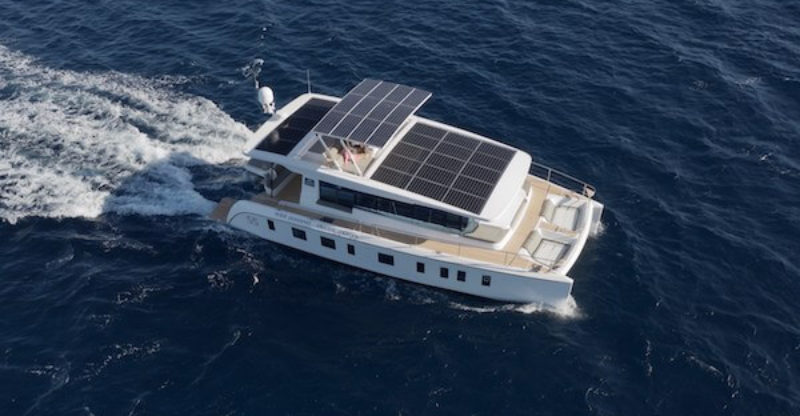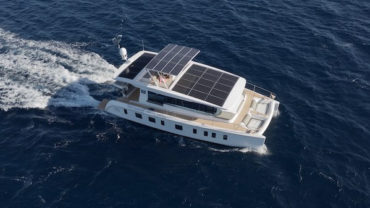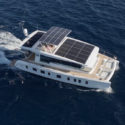Solar-Powered Boats
The Emergence of Solar-Powered Boats
Over the years, as technology has advanced, so too has the emergence of boats that run on the energy of the sun. Solar-powered boats receive their energy directly from the sun through the use of solar panels. The stored solar energy runs the electric motors within the boat and the storage batteries hold the sun’s energy.
Within the solar panels are photovoltaic cells, cells that convert light into electricity. By using solar panels, a boat can drastically reduce any use of fossil fuels and is using a renewable energy source to aid in helping the energy crisis in which our world currently resides.
There are many reasons for the appearance of the solar-powered boat. Not only are solar panels extremely reliable, but they are also effortless to maintain due to their lack of moving parts. They are also built strong, they can survive high winds, the impact of heavy rain or hail, and even the change in seasons from freezing cold weather to the thaw cycle that proceeds it.
Although most reliable on a sunny day, they can produce anywhere from 25% of their maximum output on an extremely cloudy day to approximately 75% on a partially cloudy day. They have no fuel to burn and therefore have eliminated all harmful impact on the environment, including greenhouse gases.
Lastly, they are flexible with respect to their size and how they can be placed on a boat. Solar panels can be used on any size of a boat, from smaller, leisure crafts, to high energy-powered yachts or commercial ships. In fact, more boats are deciding to take the solar-panel route for the strong positive impact they are making in the boating world.
Successful Solar-Powered Boats
For example, the Aditya is India’s first solar-powered ferry and has been in use for just over two years, now. Those who reside in the area and are frequent commuters of the Vaikom-Thavanakkadav route have touted the ferry as a lifeline.
Thanks to its solar power, the ferry has already saved almost 45 lakhs, the equivalent to approximately $65, 000 US in both diesel fuel and maintenance costs. The ferry has a capacity to carry 75 passengers and has the ability to earn a total income of 43.8 lakhs over the span of two years. Check out the video below to see the Aditya in action.
Another recognized electric boat, and one of the earliest solar-powered vessels, was used to cross the Atlantic Ocean in 2007, the Sun21. Its purpose was to help promote the potential of renewable energy, battle climate change, and to demonstrate that solar power could be used to navigate a vessel across larger stretches of water, including the ocean.
The Sun21 was piloted by five Swiss sailors, it weighs 11 tons, and has 48 silicon photovoltaic cells that helped to transmit the same energy that would be needed to light ten 100-watt light bulbs to run at the speed of 3.5 knots.
The Kara Solar river transportation project has developed Amazon’s first solar-powered river transportation system. This was done in partnership with the people of the southern Ecuadorian Amazon, the Achuar people. It currently serves nine Achuar communities located along the Pastaza and Capahuari Rivers.
MS Tûranor Planet Solar

The largest solar-powered vessel is the MS Tûranor Planet Solar which was built by the Swiss company Planet Solar and was founded by the Swiss explorer Raphaël Domjan. It was first launched in 2010 and is recognized for its 585-day trip that took it around the world in May of 2012.
The entire trip was powered exclusively by solar energy with its 500 solar panels on the top deck equaling a total of 120 kilowatts of energy. The Tûranor has a speed of five knots, on average, it generates 127 horsepower from the solar panels, reaches 102 feet in length, and has a beam of 49’ 3”.
Currently, it has been donated to the Race for Water Foundation and is used as a laboratory for scientific missions. Its main purpose is to raise environmental awareness and has a mission to significantly reduce the amount of floating litter in European waters by the year 2020.
Will Solar-Powered Boats Become the Norm?
Although we are seeing more solar-powered vessels, there is still room for growth. Their dependence on storing enough energy to properly propel any craft can be a challenge for boats that require higher speeds and deplete batteries more quickly.
The hope is for future advancements to include less expensive materials and better energy storage solutions. Undoubtedly, the emergence of such vessels will continue to progress as their ability to not only save money in the long run but also aid in helping our environment are undeniable.


